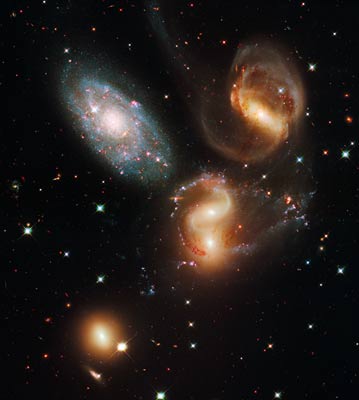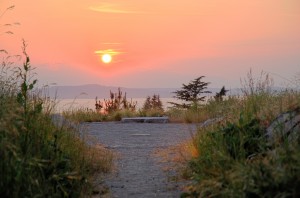Archive for 2009
 Equinox Event
Equinox Event
Tomorrow (Tuesday, September 22) is the Fall Equinox here in the Northern Hemisphere. I’m planning to head over to Solstice Park in West Seattle (7400 Fauntleroy Way SW) to watch the Sun set over the Equinox marker at 7:06pm.
If you’d like to join me, please do – and your whole family is welcome too. If it is clear I’ll bring my new Galileoscope and we’ll see if we can’t find a few neat sky objects after it begins to get dark. If it isn’t clear, I’m still going to the park, but I won’t be bringing my telescopes.
Consider it your “science fix” while Pacific Science Center’s exhibits are closed this week – but don’t forget, we open again on Saturday all clean and shiny!
![]()
~ A l i c e !
 September-October Sky 2009
September-October Sky 2009
September-October 2009 Starmap
(With an activity! If you complete it, you should send me a photo of yours, I’d love to see them!)
Notable Sky Objects
HEY ALICE! I SAW …
In every season’s sky there seems to be an object that is spectacular enough that people come up to me saying “Hey Alice, last night I saw…” I guess it is a little rude of me, so I apologize, but I can usually interrupt the sentence at this point and tell them what it was – which makes me seem almost psychic. Well sorry, but it isn’t magic, its pattern recognition. After three people have asked me about the same object, I naturally assume the next few will be asking about the same thing. I love supporting people’s excitement about the sky, and I love it that you come to me to ask what you saw – so keep it up, but just in case you want to make a guess for yourself first (or impress your friends), this season’s “Hey Alice!” object is the spectacular and bright Jupiter.
JUPITER
Jupiter will be highly visible most of the night in September and October. It will be rising in the Southeast, near the constellation Capricorn. If you pull out some binoculars and steady yourself against something, you should be able to pick out the moons of Jupiter, just like Galileo did.
MERCURY and SATURN
Mercury and Saturn are too near the Sun from our point of view to be easily visible. You might catch a glimpse of Saturn in the early morning in very late October near the eastern horizon.
MARS and VENUS
In early September: Mars is rising about 1am in Gemini, and Venus is rising around 4am in Cancer.
In late October: Mars is rising a little after midnight in Cancer. Venus will not be visible.
EVENTS
September 30 – MESSENGER makes its third flyby of Mercury, and soon after that there will probably be some awesome new photos of this tiny, hot, rocky planet.
October – Don’t miss The Halloween Show in the Willard Smith Planetarium at Pacific Science Center. We’ll be bringing back the newly spookified version of the historical astronomical connections to our modern candy-riffic holiday. It will be weekends at 2:30 – you can get tickets at our ticketbooths or online.
CARNIVALS OF SPACE
I’ve missed a few, but you shouldn’t. Check out #112, #113, #114, #115, #116, #117, #118, #119, and #120!
New Constellations
A recent survey of attendees of the Willard Smith Planetarium suggested that visitors would like to hear even more about current science and new discoveries. I still want to tie that back to the constellations we’re viewing whenever possible, so in this bi-monthly Sky Update I have attempted to share a piece of current science that can be associated with each constellation. I haven’t succeeded, I only found time to put in 3 things but they’re pretty cool, and I’ll keep building on this.
PISCES – The Fish
SCIENCE: M74 is one of the most beautiful face-on spiral galaxies I have ever seen.
MYTH: We often use the loop at the end of Pisces as the wings of Pegasus. Technically, these stars are in Pisces – but it sure helps to see Pegasus as a winged horse.
Returning Constellations
AQUILA – The Eagle
CURRENT: NASA’s new moon lander will be called Altair – after the brightest star in Aquila. Neat that it is a star in the constellation of the Eagle, when the first lander that landed on the Moon was also called the Eagle.
ANDROMEDA – The Princess
PERSEUS – Perseus
PEGASUS – The Flying Horse
CURRENT: On September 9th (2009) Hubble released four new images taken after the last servicing mission. They are breathtakingly beautiful as usual – but the one of Stephan’s Quintet was taken while Hubble was pointed at the constellation Pegasus. This is a great opportunities to talk about types of galaxies, interacting galaxies, or the size of the universe.
CAPRICORNUS – The Sea Goat
DELPHINUS – The Dolphin
LYRA – The Lyre
CYGNUS – The Swan
CURRENT: NASA’s Kepler mission (looking for Earth-like planets around other stars) is pointed at Cygnus, and will stay pointed between Cygnus and Lyra for the duration of its mission.
BOÖTES – The Herdsman
HERCULES – Hercules
CORONA BOREALIS – The Northern Crown
CEPHEUS – King Cepheus
DRACO – The Dragon
URSA MAJOR – The Great Bear
URSA MINOR – The Little Bear
CASSIOPEIA – The Queen
“Tiny” Guys
Going for the Gold? Here’re this month’s itty-bittys.
ARIES – The Ram
AQUARIUS – The Water Bearer (not that small, but not on our map)
PISCES AUSTRINUS – The Southern Fish
MICROSCOPIUM – The Microscope
SERPENS – The Serpent
SCUTUM – The Shield
VULPECULA – The Fox
SAGGITA – The Arrow
EQUULEUS – The Horse
CAMELOPARDALIS– The Giraffe
LACERTA – The Lizard
TRIANGULUM – The Triangle
LYNX – The Lynx
Wondering where I’ve been? Yeah, sorry about that. There was this grant, this major project, and this conference. I’ve gotten sick of seeing apologies for not posting all over the internet though, they remind me too much of the permanent “Under Construction” labels and animated gifs that were so prevalent on the web in the 90s. They aren’t usually interesting, I want to hear what the bloggers I follow really have to say, not that they’re sorry for not posting. So, I am actually sorry, and I hope I haven’t lost too many of you with such a long break, but I’ve hidden that apology down here at the bottom so you aren’t subjected to it if you don’t want to read it. :) Clear skies to you – or at least clear internet skies if you live somewhere with 200 days a year of cloudcover …
![]()
~ A l i c e !
 Quick Updates: Kepler, Saturn, Perseids, Jupiter
Quick Updates: Kepler, Saturn, Perseids, Jupiter
Perseids:
The Perseids peak tonight after midnight. They’re dust- and sand-sized debris left in our path from comet Swift-Tuttle. The air compressing in front of each meteor generates enough heat that the debris burns up and we see a streak of light.
Kepler:
The Kepler mission (looking for Earth-like planets around other stars) has just proved it definitely can detect planets, with more detail and precision than other methods. Kepler observed the planet HAT-P-7, which orbits its star once every 2.2 days, and was able to detect the atmosphere of the planet, and measure the daytime temperature at 4310 degrees F. Ouch.
Saturn:
Saturn’s rings are edge-on from our point of view, which happens every 15 years when Saturn reaches its equinox. According to JPL that day was yesterday, August 11, though the rings will stay mostly edge-on for a while yet.
Jupiter:
I’m quite late off the mark on this one, but something crashed into Jupiter not too long ago. On July 19th an amateur astronomy (Anthony Wesley) found this extra dark spot on Jupiter, and later professional astronomers followed up on his observations with Hubble. With Hubble they can watch as the debris plume evolves, and make better estimates about the size of the impacting object (several hundred meters across).
There is a standing hypothesis that Jupiter, being large, helps clean up the debris in the solar system. It attracts more asteroids and comets, leaving the inner solar system clearer and thus making impacts on Earth less likely.
Want More?
Where’d I Get My Info?
![]()
~ A l i c e !
 Some Links
Some Links
Life comes in waves – busy waves, and waves when you have lots of time to blog. You get one guess which wave I’m in now.
Meanwhile, I will leave you with some good links.
1. There is another Alice! Not only that, there is another Alice involved in informal astronomy education. Not only THAT, there is another Alice in the Pacific Northwest who is highly involved in informal astro ed. So, if you’re looking for Alice’s Astronomy a Go Go … you’re in the wrong place, you’re at Alice’s AstroInfo. But you should definitely head over there and check out her podcasts, she’s got some neat stuff.
2. Carnival of Space #112: Out of the Cradle celebrates the Moon Landing
3. Carnival of Space #113: Dynamics of Cats hosts one all about extraterrestrial impacts
4. Carnival of Space #114: Ultra Cheap, from Cheap Astronomy
And don’t miss Kepler’s announcement of their proof of concept: http://kepler.nasa.gov/press/earlyresults.html
![]()
~ A l i c e !
 Carnival of Space
Carnival of Space
21st Century Waves has this week’s Carnival of Space – #111! It is a celebration of the anniversary of the Apollo 11 launch! Woo!
Also, for celebrating the Moon landing, We Choose the Moon might be cool.
 A Puzzle and Two Carnivals
A Puzzle and Two Carnivals
Sunday mornings I enjoy playing the NPR’s puzzler with my family. I thought you might enjoy a puzzle/mindgame too.
It was late one December, and I was out for a walk with my family. The full moon was rising. It was rising almost due Northeast. Why?
This puzzle helped me solidify my understanding of the celestial sphere, so if you already completely understand the celestial sphere it might not be much of a puzzle – but if you’re still learning about it, figuring out this puzzle could be a turning point for you.
I’ll leave moderated comments on for this post: if you leave the answer I won’t approve the comment, but I’ll e-mail you a reply. You are welcome to leave further questions in the comments as well, but hints will only come to you via e-mail, I will not post more hints here.
Also, there are two Carnivals of Space for you to check out:
109, hosted by Discovery Space
![]()
~ A l i c e !
 July-August Sky, 2009
July-August Sky, 2009
Notable Sky Objects
JUPITER
Jupiter will be highly visible late at night, rising not long after sunset in July, and high overhead all night long through the end of August. It will be rising in the Southeast, near the constellation Capricorn.
MERCURY and SATURN
Technically they’ll be in the sky, but they aren’t up for long after sunset, so it will probably be too light to see them this month.
MARS and VENUS
Look towards the constellation Taurus to see Venus rising just after Mars around 3 in the morning in July. In late August, Mars will be rising around midnight in the constellation Gemini, and Venus will still be rising around 2 or 3am in the constellation of Cancer.
EVENTS
July 23- August 22 (peak August 12) – Perseid Meteor Shower, best viewed after midnight.
August 14 – Jupiter at opposition (the Mars Hoax e-mail says Mars will be at opposition in August – it won’t, but you will be able to see Jupiter at opposition instead!)
New Constellations
AQUILA – The Eagle
SCIENCE: Altair is the BEST star in the whole sky.
MYTH: Tanabata: there are versions of this myth all over Asia, all slightly different, but all telling the same basic story. This is one of the Japanese versions. Kengyuu (Altair) is a cowherder boy and he is in love with Orihime (Vega) the weaver princess. They are so in love that they forget to do their chores, and the Emperor decides to punish them. He places them in the sky on opposite sides of Amanogawa, the River of Heaven (the Milky Way) so they cannot meet. The magpies take pity on them, and one day out of the year, on the seventh day of the seventh lunar month (August 26th, 2009), they build a bridge over the Milky Way so the lovers can be together. Unfortunately, if it is raining or cloudy, the magpies are not able to build the bridge.
ANDROMEDA – The Princess
SCIENCE: M31- The Andromeda Galaxy is visible to the naked eye, and better through a telescope.
MYTH: Saudi Arabians called Andromeda “the sea lion”. To the Phoenicians, the whole part of the sky where Andromeda is seen as a threshing floor, and the constellation is a grain thresher working
PERSEUS – Perseus
SCIENCE: The Perseid Meteor shower appears to radiate out of the constellation Perseus. The point meteors all appear to originate is called the “radiant.”
MYTH: For the ancient Chinese, the right side of the constellation Perseus is the Mausoleum. The star just inside the right-hand curl is Jishi – the Heap of Corpses.
PEGASUS – The Flying Horse
SCIENCE: The star at the tip of the horse’s head is called Enif, which means “nose.”
MYTH: The two northernmost stars in the Great Square of Pegasus (α And, and γ Peg: the star attached to Andromeda, and the star next to it that is part of the horse’s back) are the “Encampment” in Chinese mythology. There are three pairs of stars scattered near this asterism which are Ligong or “Resting Places” for the Emperor.
CAPRICORNUS – The Sea Goat
SCIENCE: Jupiter is right beside Capricornus this month.
MYTH: Part of Capricornus along with parts of Pisces and Aquarius make the “Line of Ramparts” in ancient Chinese mythology – a line of fortresses built by the celestial army. Since I can’t read Chinese, I can’t tell you exactly which stars these are, but check the Chinese Starmap.
“Tiny” Guys
Going for the Gold? Here’re this month’s itty-bittys.
CANES VENATICI – The Hunting Dogs
COMA BERENICES – Berenice’s Hair
SERPENS – The Serpent
LIBRA – The Scales
SCUTUM – The Shield
VULPECULA – The Fox
SAGGITA – The Arrow
EQUULEUS – The Horse
LACERTA – The Lizard
TRIANGULUM – The Triangle
LEO MINOR – The Small Lion (Between the Big Dipper and Leo)
CAMELOPARDALIS– The Giraffe
LYNX – The Lynx
Returning Constellations
DELPHINUS – The Dolphin
LYRA – The Lyre
CYGNUS – The Swan
SCORPIUS – The Scorpion
BOÖTES – The Herdsman
HERCULES – Hercules
CORONA BOREALIS – The Northern Crown
CEPHEUS – King Cepheus
DRACO – The Dragon
URSA MAJOR – The Great Bear
URSA MINOR – The Little Bear
CASSIOPEIA – The Queen
Where’d I Get My Info?
My memory, and Zeta Strickland
CHAN Ki-hung, Chinese Ancient Starmap, 2007
![]()
~ A l i c e !
 Two Carnivals (107 and 108)
Two Carnivals (107 and 108)
The Solstice Edition of the Carnival of Space (#108) is up at Starts With a Bang, and I’m the first linked article. Wow!
And don’t miss Edition #107 over at Innumerable Worlds.
![]()
~ A l i c e !
 Solstice Park, West Seattle
Solstice Park, West Seattle
The solstice is on its way! Although there may be celebrations and fun all over Seattle, there is at least one place where you can actually measure the astronomical significance of the longest day of the year: Solstice Park in West Seattle.
You’ve never heard of Solstice Park?
It’s been there since July 2005 – across the street from Lincoln Park, but I have to admit, I only just visited for the first time on Thursday. I loved it. At the top of the hill are stonework and earthworks aligned for sunset on the winter solstice, the summer solstice, and the equinoxes.
Credit: Jason Gift Enevoldsen
Sunset on June 11, 2009
As you can see, during this sunset the Sun isn’t setting quite perfectly above the summer solstice marker, and that’s because the photo was taken ten days before the solstice.
How to get there
Solstice Park is at 7400 Fauntleroy Way SW in Seattle. It used to be called “Lincoln Park Annex” and it still has six tennis courts right beside Fauntleroy, so that should help you find it. There are about 13 parking spaces on the south side of the park, and one handicapped spot at the end of a dead-end street near the top of the park.
Once you’re in the park there are trails that lead up to the overlook: you’ll walk past the tennis courts, through the P-Patch and continue on up the hill. When the trail ends go five more feet to enter the stonework circle and get the best views of sunset.
Stargazing
As of June 2009, the park is open from 4am to 11:30pm, giving you plenty of time for stargazing, unlike many city parks. If you’re looking for dark skies within the Seattle city limits, this is one of the better public places I’ve been to. The trails are unlit, and as long as you stay behind the middle of the overlook, the tennis court lights are shielded from view.
You have an almost perfect western horizon from south southwest to north northwest. The eastern horizon is blocked to about 35 degrees, but that helps cut out the light pollution from Seattle proper.
Want More?
Stop by Pacific Science Center and take a look at our sundial.
Where’d I Get My Info?
Solstice Park Official Website
A review by Nerd’s Eye View
![]()
~ A l i c e !
 Animal Astronomy
Animal Astronomy
by Guest Writer Sophie Arlow
Many people assume that astronomy is solely a human endeavor. After all, we have named constellations, created telescopes, and even landed on the Moon. However, humans are not the only species to use astronomy – from the Moon and stars to magnetic fields, animals also use information from the earth and skies.
The Mystery of Magnetite
What do salmon, dolphins, sea turtles, and whales have in common? These animals share much more than an underwater habitat – all are believed to use a mineral called magnetite to assist in navigation and migration. Magnetite is a special type of iron oxide which, as you might have guessed, is magnetic! Early humans used naturally-occurring deposits of magnetite, called lodestones, as primitive compasses.
Some specialized types of aquatic bacteria contain magnetite, which scientists hypothesize allows them to tell up from down. When exposed to a strong magnetic field, these bacteria all align perfectly, like miniature compass needles. On a larger scale, whales, dolphins, and salmon use magnetite to navigate deep below the water’s surface, where landmarks and visual cues like the sun and stars are not visible.
Expert Nautical Navigators
A serious contender for the title of most skilled animal navigator is the loggerhead sea turtle. Loggerhead hatchlings, only two inches long, emerge from their eggs, dig themselves out of the ground, and, with no help from their parents or other turtles, enter the ocean to begin their spectacular journey. Over a period of several years, loggerhead turtles travel more than 9,000 miles, spanning entire oceans before returning home to coastal regions in North America.

Loggerhead turtles travel over 9,000 miles in the Atlantic Ocean, guided by the Earth’s magnetic field. Credit: UNC Biology
How do hatchlings, never having seen the ocean before, maintain their headings across a vast expanse of often-featureless ocean? As hatchlings reach the water, they begin swimming directly into ocean waves until they are several miles from shore. At this point, hatchlings must use a new navigation method: orienting themselves using the Earth’s magnetic field. It also seems that they have a built-in magnetic map that guides them throughout their migration and allows them to return to the exact location where they hatched to lay their eggs.
How is this amazing feat possible? Scientists aren’t entirely sure. However, they do know that sea turtles’ brains contain tiny crystals of magnetite, which may allow them to sense the direction of the Earth’s magnetic field. This could enable them to find their way across thousands of miles of ocean and return to their birthplace decades later.
Moon Phases Trigger Coral Blooms
The Moon also influences various animals – including those in the sea! Coral reefs (made of huge colonies of coral – a tiny invertebrate animal closely related to a sea anemone) usually spawn once a year. For such a rare event, the coral polyps need to synchronize exactly when they release their gametes.
One trigger that helps them stay in synch is the phase of the Moon. One coral reef in the Caribbean spawns every year on the eighth day after the full Moon in August. That’s pretty specific. Other coral reefs are triggered by different Moon phases, but water temperature, currents, and tides also influence exactly when the coral bloom happens.
Sources
Magnetic Bacteria
The Innovations Report
Sea Turtle Navigation
PBS – NOVA
University of North Carolina Sea Turtle Research
National Geographic Today – Animal Migration
Coral Blooms
http://tinyurl.com/CoralBlooms









